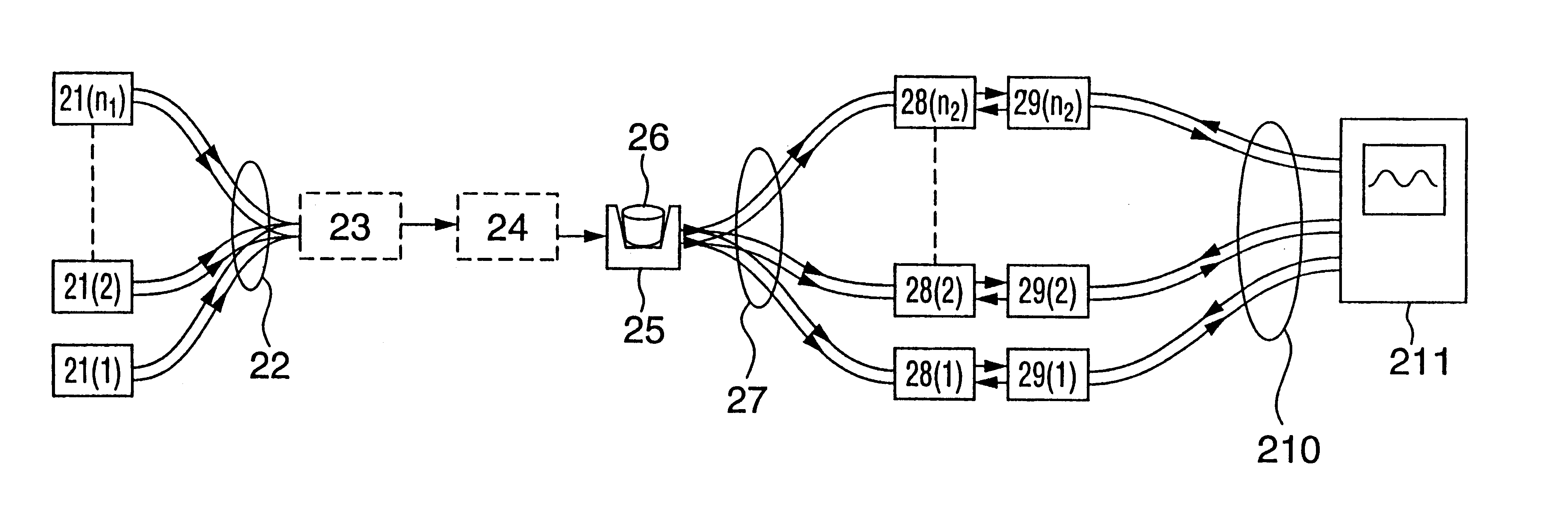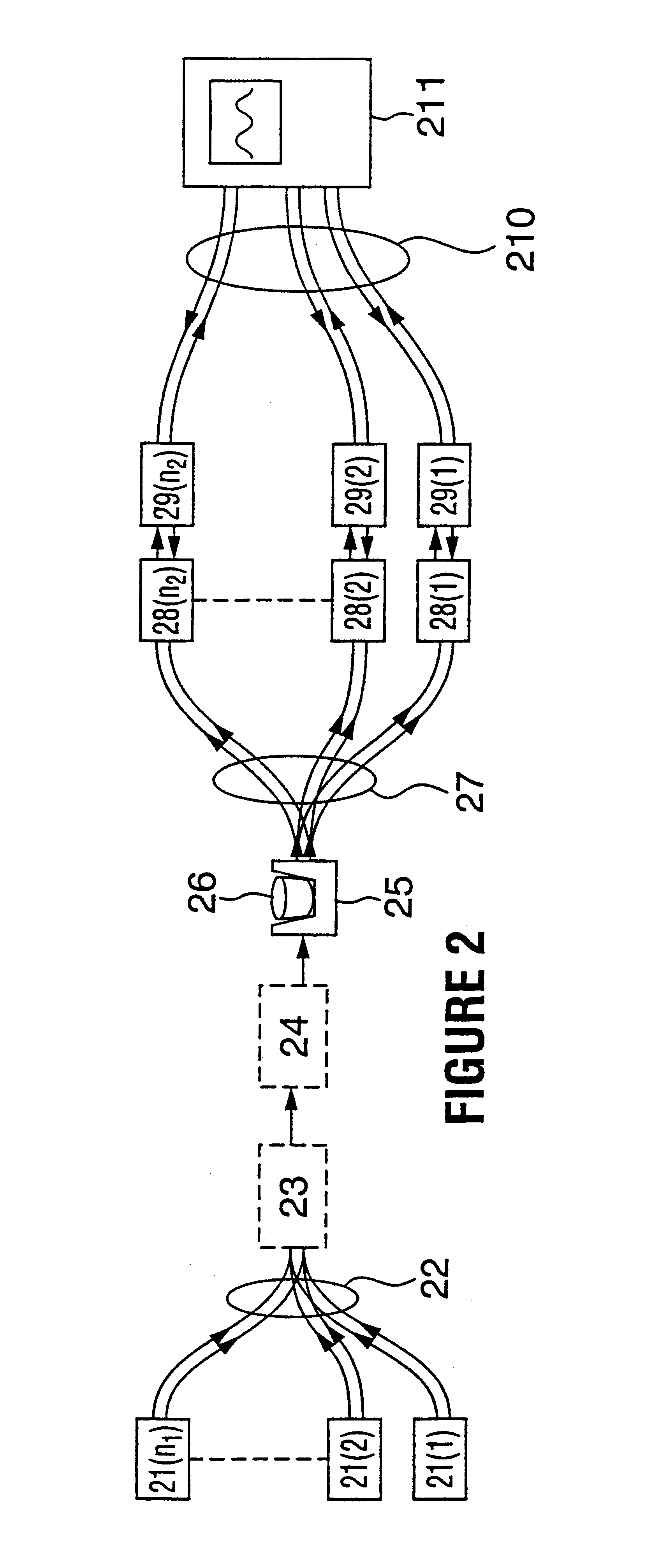Method for determination of analytes using near infrared, adjacent visible spectrum and an array of longer near infrared wavelengths
a technology of near infrared and analytes, applied in the direction of optical radiation measurement, instruments, applications, etc., can solve the problems of inability to measure the constituents of the body, increase the duration of the measurement process, and significant time delay in measurement in different bands
- Summary
- Abstract
- Description
- Claims
- Application Information
AI Technical Summary
Benefits of technology
Problems solved by technology
Method used
Image
Examples
Embodiment Construction
Referring now to FIG. 2, a certain number (n1) of light sources 21 generate a broad spectrum of light covering all required spectral ranges. The light sources contain power supplies, light sources, means to collect light from these sources and means to concentrate light into optical elements predestined to nix light from these sources and bring it to the sample.
Light from the light source is collected by light collecting means, preferably by multiple fiber bundles 22, and is optionally delivered through a light mixing device 23 (glass rod, for example) and, optionally a light forming device 24 (light collimator, or focusing lens, for example) to a sample receptor 25 (sample holder, finger holder, integrating cavity or any other device to hold sample) containing a sample 26 (human finger, for example). After interaction with sample the light is collected by a light collecting device 27 (another light bundle, or any other light collecting optical system, lens, for example) and is divi...
PUM
 Login to View More
Login to View More Abstract
Description
Claims
Application Information
 Login to View More
Login to View More - R&D
- Intellectual Property
- Life Sciences
- Materials
- Tech Scout
- Unparalleled Data Quality
- Higher Quality Content
- 60% Fewer Hallucinations
Browse by: Latest US Patents, China's latest patents, Technical Efficacy Thesaurus, Application Domain, Technology Topic, Popular Technical Reports.
© 2025 PatSnap. All rights reserved.Legal|Privacy policy|Modern Slavery Act Transparency Statement|Sitemap|About US| Contact US: help@patsnap.com



